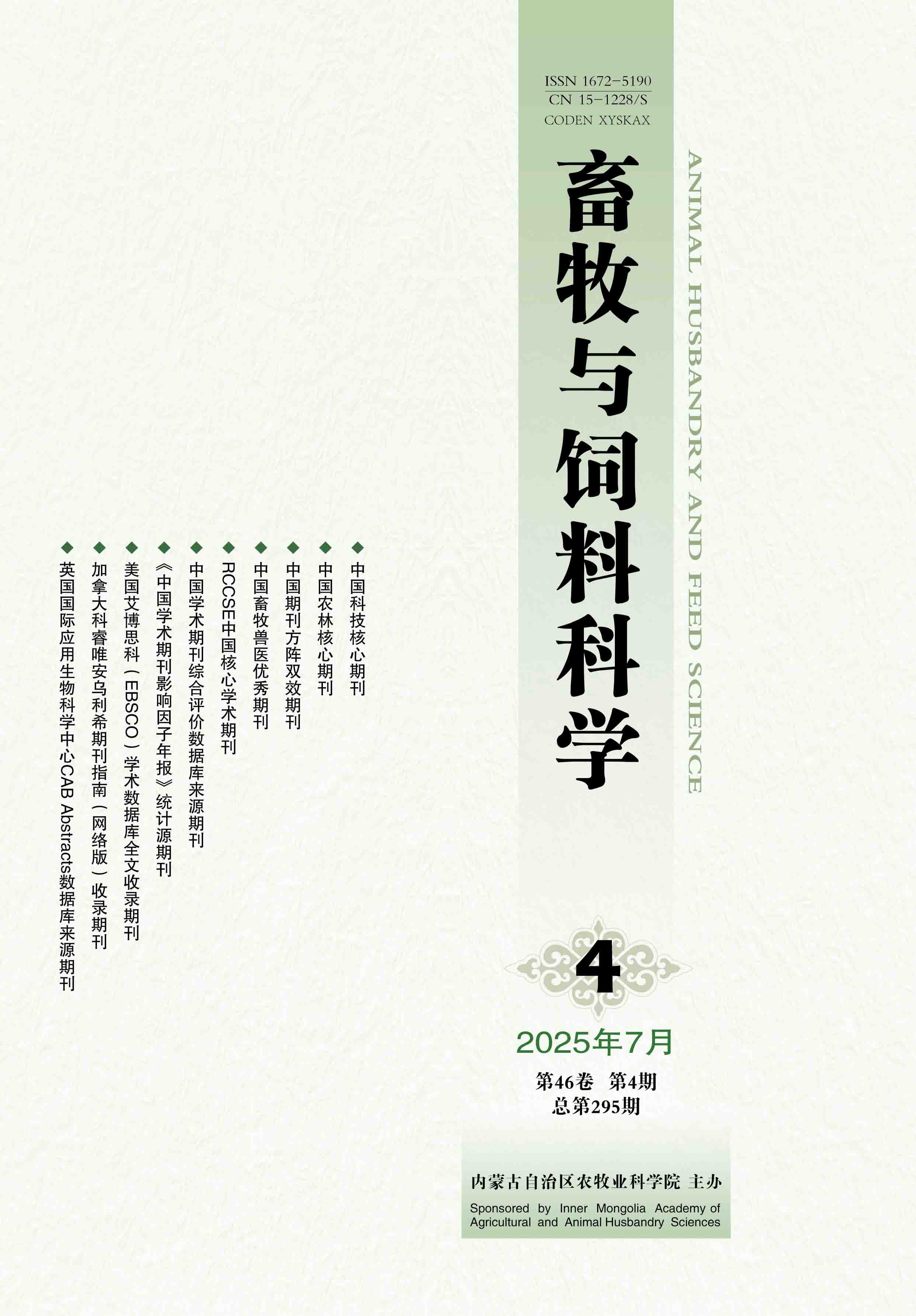Select
Investigation on the Current Situation of Gastrointestinal Parasites Infection in Yili Horses with Different Ages in Varied Seasons in Zhaosu County of Xinjiang
CHEN Hui, MA Yu-hui, MA Chen, ZHAO Guo-dong, LV Yan, LI Xiao-bin, Pahaerding·Tulupa, Mijiti·Mukaidaisi, Aili·Ayisubiyi, Daniyaer·Nabei
2019, 40(9):
1-5.
doi:10.12160/j.issn.1672-5190.2019.09.001
Abstract
(
278 )
PDF (514KB)
(
98
)
Save
References |
Related Articles |
Metrics
This study aimed to assess the prevalence of infections caused by main gastrointestinal parasites in Yili horses with different ages in varied seasons. A total of 332 healthy Yili horses (half male and half female) aged 1-year-old (n =106), 2-year-old (n =116) and 3-year-old (n =110) with similar weight were chosen from Zhaosu County of Xinjiang, respectively. A total of 664 fecal samples were collected from the Yili horses with different ages in spring (April) and autumn (October), respectively. Dual samples were collected from each horse in the morning and the other in the evening, and the parasite eggs were recovered, identified and counted. The results showed that six types of parasite eggs were observed in the fecal samples collected from Yili horses with different ages in spring and autumn, including Strongylus equinus (S. equinus ), Trichostrongylus orientalis (T. orientalis ), Triodontophorus tenuicollis (T. tenuicollis ), Parascaris equorum (P. equorum ), Oxyuris equi (O. equi ) and Eimeria uniungulati (E. uniungulati ). Among them, high perveance was found in S. equinus , T. orientalis , T. tenuicollis and P. equorum . For the Yili horses one year of age, two years of age and three years of age observed in spring, the infection rate of S. equinus was 98.11%, 90.52% and 88.18%, respectively; the infection rate of T. orientalis was 95.28%, 89.66% and 97.27%, respectively; the infection rate of T. tenuicollis was 85.85%, 78.45% and 87.27%, respectively; the infection rate of P. equorum was 46.23%, 35.34% and 29.09%, respectively. For the Yili horses one year of age, two years of age and three years of age observed in autumn, the infection rate of S. equinus was 87.74%, 69.83% and 78.18%, respectively; the infection rate of T. orientalis was 74.53%, 79.31% and 86.36%, respectively; the infection rate of T. tenuicollis was 65.09%, 68.10% and 76.36%, respectively; the infection rate of P. equorum was 46.23%, 35.34% and 24.55%, respectively. Our results demonstrated that the dominant gastrointestinal parasites prevailing in Yili horses in Zhaosu County of Xinjiang were S. equinus, T. orientalis, T. tenuicollis and P. equorum ; Yili horses one year of age were more sensitive to the gastrointestinal parasites infection compared to those two and three years of age; generally, higher gastrointestinal parasites infection rate in Yili horses was observed in spring than autumn.








